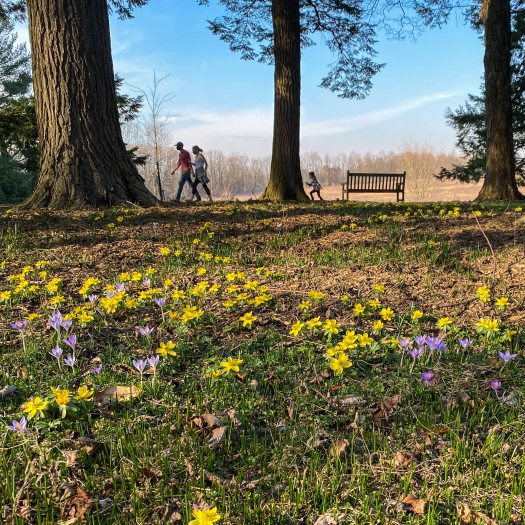Step back in time as you explore Peirce’s Park, where the story of Longwood Gardens begins. Home of two notable allées of stately and spectacular trees, this area was restored by founder Pierre S. du Pont (1870-1954) following his purchase of the property in 1906. Look for stunning displays of woodland wildflowers from spring through fall as you marvel at soaring specimens, many of which are more than 100 years old.
About This Garden
In addition to the impressive botanical history of the area, there is more beauty to behold, nestled in the woods at the east of the park: the Sylvan Fountain, constructed by Pierre in 1926. Laid out in a semicircular shape with five water jets, the water system for the fountain is part of a larger system that also circulates through the Italian Water Garden. Throughout the spring, geophytes, rhododendrons, and bottlebrush buckeyes add horticultural interest to one of the more tranquil spots at Longwood. Come fall, hundreds of autumn-blooming crocus complement the fall color in the canopy above.
In 1990, landscape architect Sir Peter Shepheard designed new paths to be laid out through Peirce’s Park and Peirce’s Woods. His efforts to enhance guests’ journeys also improved the connection to the adjacent landscapes. Winding paths that reach the southern edge of the meadow provide new viewsheds into Peirce’s Park, emphasizing the open, scenic nature of this space. Additionally, Shepheard's efforts underscore the ongoing design ethos throughout Longwood, which emphasizes the relationship between formal and informal, providing a more fluid segue to the linear layouts of Flower Garden Walk and the Italian Water Garden.
Please note: The water features of this garden can be enjoyed from mid-April until mid-October.













